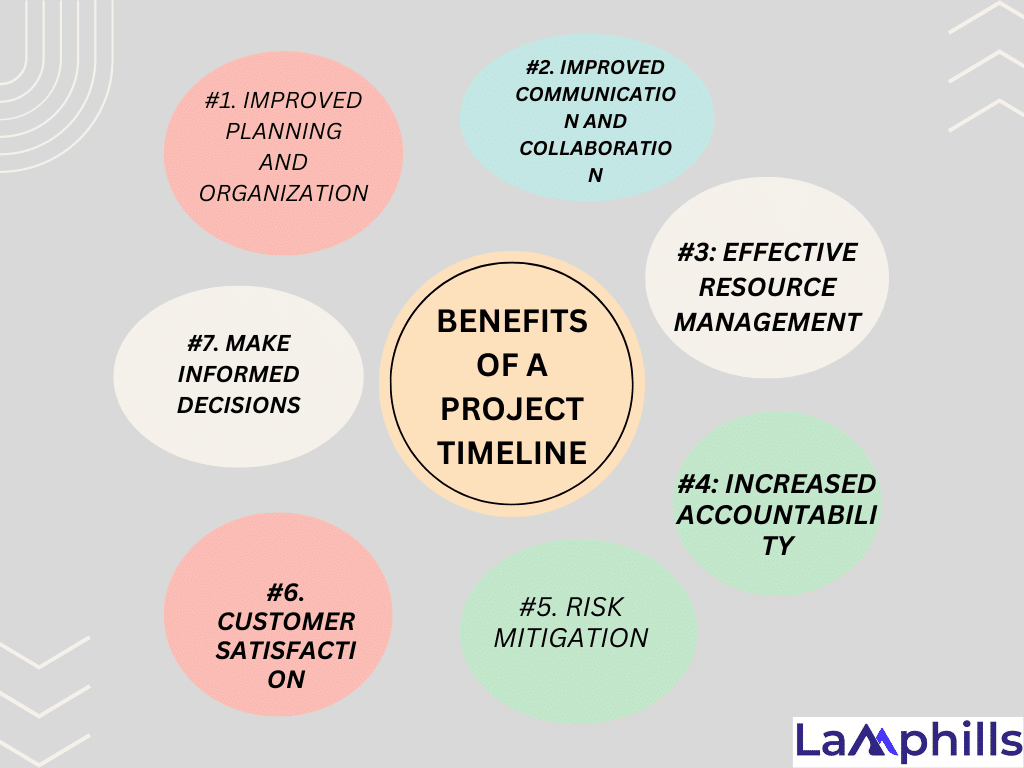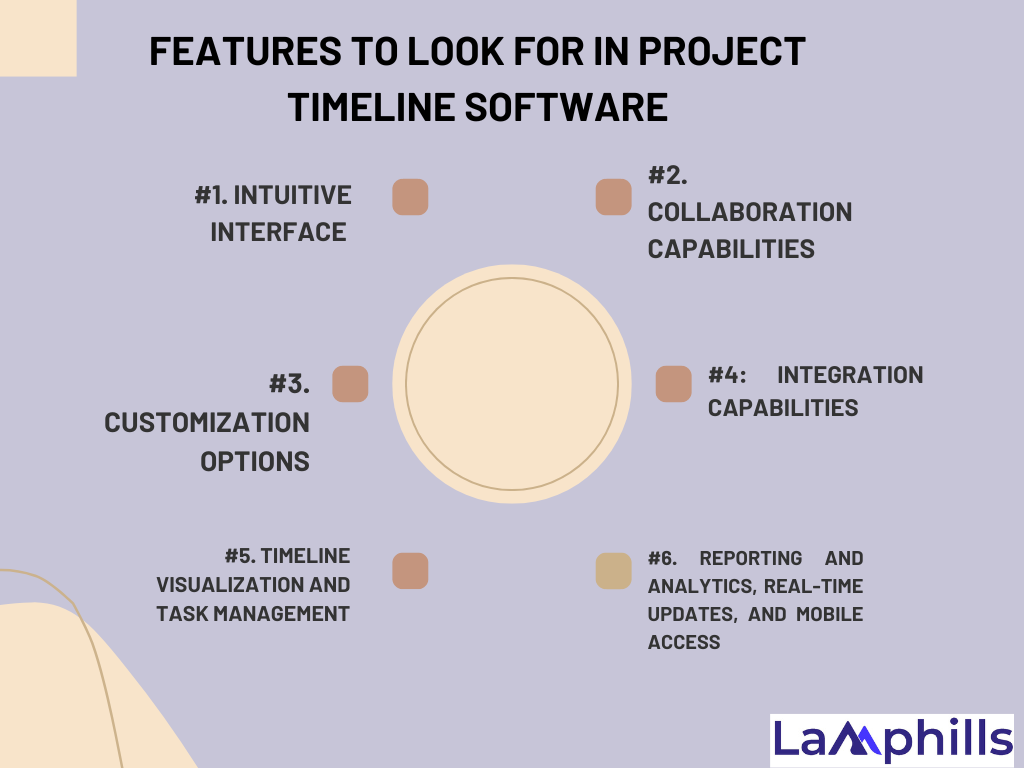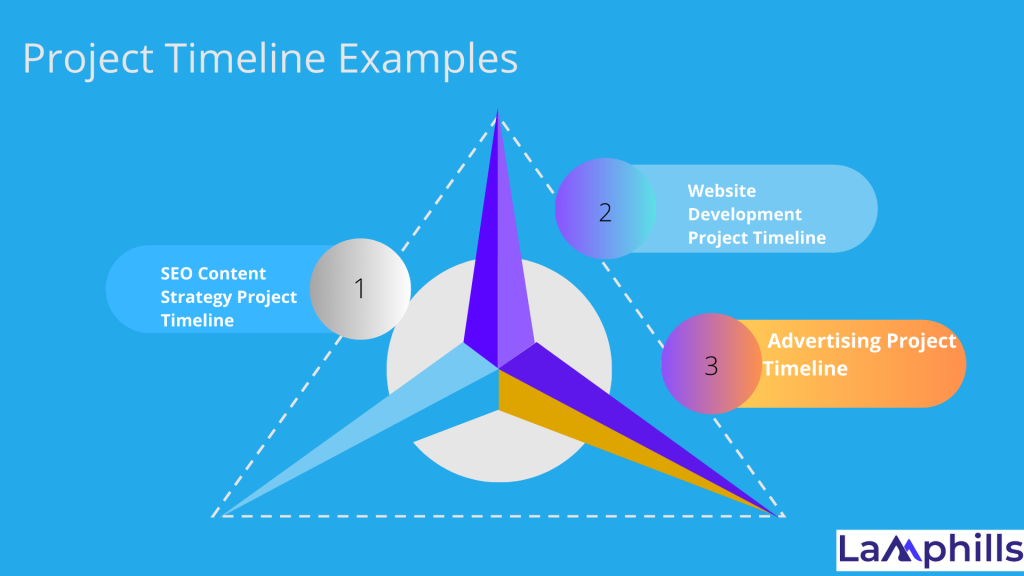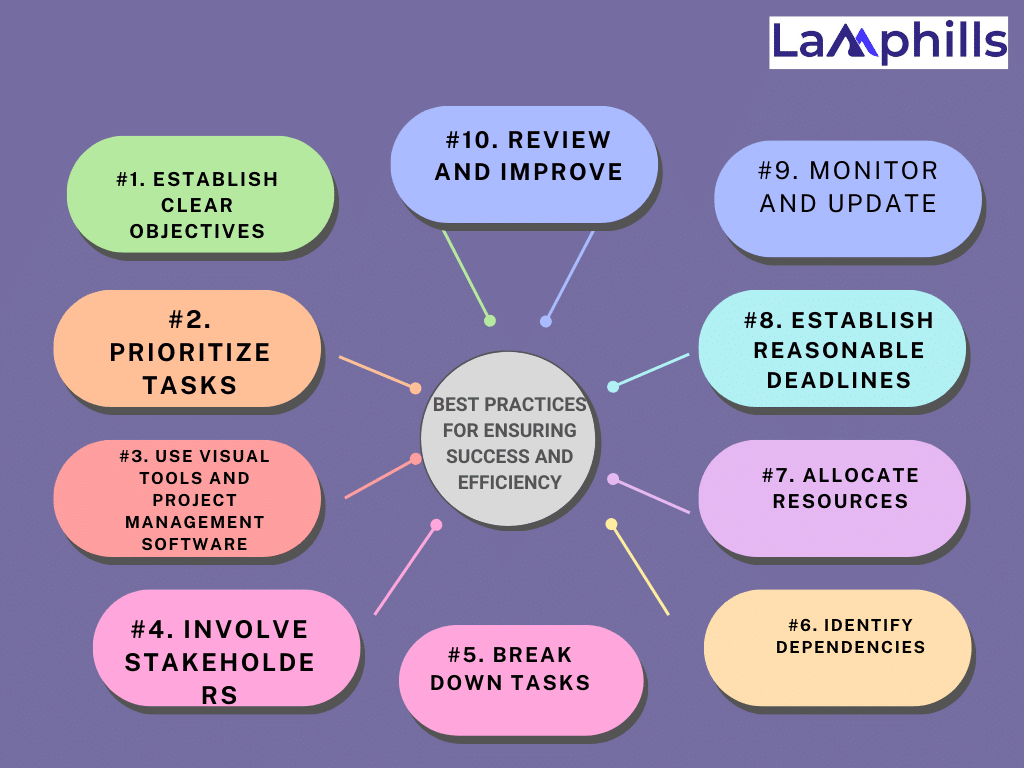Have you ever started a project with great enthusiasm, only to discover halfway through that deadlines are sliding, responsibilities are piling up, and you’re feeling more stressed than productive? I have been there. When I was working on my first major content campaign, I assumed I had everything under control—until I didn’t. Same way creating a successful project timeline is more than putting events on a calendar. It’s all about strategy, efficiency, and, most importantly, ensuring that you can meet your objectives. In this article, I will walk you through the best practices I’ve learned (often the hard way) for creating a successful timeline project.
Key Takeaways
- A project timeline is not just a schedule but a strategic tool that helps break complex projects into manageable phases, ensuring all tasks are prioritized and aligned with goals for successful execution.
- Establishing deadlines and milestones within a project timeline fosters enhanced team communication, collaboration, and accountability, leading to better resource management and smoother project workflows.
- Project timelines are dynamic, allowing teams to identify risks and adjust tasks or deadlines in real-time, which helps mitigate potential delays and ensures the project stays on track despite challenges.
- Tools like Gantt charts and Kanban boards offer visual representations of project progress, making it easier to track dependencies, monitor task completion, and communicate progress to stakeholders.
What is a Project Timeline?

When we talk about a timeline project, we’re referring to a structured plan that breaks a larger project into manageable chunks, with deadlines assigned to each phase. Think of it as the backbone of your project’s success. Without a solid timeline, even the best-laid plans can turn chaotic.
In my experience, I’ve seen timeline projects applied in all sorts of scenarios: marketing campaigns, product launches, website redesigns, you name it. In one particular case, I managed the timeline for a six-month content marketing campaign. Breaking the project into manageable phases helped me keep my sanity—and the team’s momentum going. Without a timeline, we’d have missed out on crucial opportunities to refine and improve our approach.
In other words, a project timeline is an essential project management tool that visually depicts the timetable and specifies the order and duration of work. It divides a project into components and facilitates effective workload management through integrations such as a work breakdown structure (WBS).
Benefits of a Project Timeline

A project timeline offers a multitude of benefits that significantly enhance the efficiency and success of projects. Here are some key advantages:
#1. Improved Planning And Organization
A project timeline provides a systematic roadmap for the entire project, ensuring that all tasks are recognized, prioritized, and scheduled properly. This systematic method facilitates better resource planning and allocation.
#2. Improved Communication And Collaboration
A concise timeline ensures that team members understand project milestones, deadlines, and dependencies. This promotes improved communication and collaboration among team members, eliminating misunderstandings and conflict.
#3: Effective Resource Management
Project timelines provide for better resource allocation by defining tasks and deadlines. Teams can detect restrictions and assign resources efficiently to avoid bottlenecks and ensure smooth project execution.
#4: Increased Accountability
Setting deadlines for specific tasks increases accountability among team members. Everyone understands their roles and expected timescales for work completion, which decreases procrastination and improves overall productivity.
#5. Risk Mitigation
Project timelines help project managers identify potential risks and bottlenecks early in the project lifecycle. With a comprehensive understanding of task dependencies and critical path activities, project managers may proactively address difficulties and prevent risks before they escalate.
#6. Customer Satisfaction
Transparent project schedules provide clients with visibility into project progress and planned deliverables. This transparency fosters trust and confidence in the project’s management, resulting in higher client satisfaction.
#7. Make Informed Decisions
Project timelines are useful decision-making tools because they provide stakeholders with timely and reliable information about the project’s development. Managers can make informed decisions using real-time data, keeping projects on track and within budget.
Features To Look For in Project Timeline Software

Choosing the right project timeline software is crucial for effectively managing projects and ensuring successful outcomes. Here are some essential features to consider when evaluating project timeline software:
#1. Intuitive Interface
Look for software that has an easy-to-use interface and enables timeline adjustment. Jira stands out for its user-friendly design and drag-and-drop features, which make creating and managing project timelines simple.
#2. Collaboration Capabilities
Atlassian’s collaboration tools promote effective communication and teamwork by allowing team members to see and amend project timelines in real time. Commenting, task assignment, and file sharing are all features that encourage collaboration and keep everyone on track throughout the project.
#3. Customization Options
Choose software with customization options to adjust project schedules to your needs.
#4: Integration Capabilities
Choose software that works flawlessly with your organization’s project management tools and applications.
#5. Timeline Visualization And Task Management
Look for software that has visually appealing timeline visualization tools like Gantt charts or Kanban boards. Its powerful task management features—such as boards, issues, and reports—allow users to stay on top of job deadlines, manage dependencies, and provide insightful reports to keep projects on schedule.
#6. Reporting And Analytics, Real-Time Updates, And Mobile Access
Choose software that allows you to track critical project indicators and make data-driven decisions. This is because real-time notifications keep teams informed every step of the journey and provide rapid updates on critical task updates, new comments, or changes in project status.
The Different Types of Project Timelines
There are four common types of project timelines that you might have already come across. Each one comes with its own unique set of pros and cons, so weigh up your priorities and choose one that’s best suited to your project’s needs.
#1. Gantt Chart Timeline
Gantt timelines are one of the most used forms of project charts because they provide a fast overview of the complete project, including task end dates, significant project milestones, task dependencies, and who is allocated to each work. They are now highly interactive, with real-time updates and editing capabilities. This makes them a useful complement to a project because they are always current.
#2. Historical Timeline
Simply put, a historical timeline lays out the tasks involved in a project in chronological order, either from left to right or from top to bottom. Think about your average history timeline that markers key dates from a specific time period — this is the basic structure of a historical timeline.
#3. Vertical chart Timeline
Vertical charts are best suited to projects dealing with data — like finance projects or a marketing department tracking leads. They essentially show the gains of something over a specific timeframe, like how much website traffic is generated each month or how much monthly recurring revenue (MRR) is coming in.
#4. Kanban Timeline
Kanban timelines are a good solution for teams that rely on a Gantt chart for overall tracking, and a Kanban board to figure out what to do today or this week.
A Kanban timeline is a bit of a hybrid. It doesn’t go as deep or as technical as a Gantt can, but uses the same basic approach. Some Kanban timelines can be expanded out to a conventional card workflow, and the two (timeline and card view) are linked together.
What is the difference between a project schedule and a project timeline?
A project schedule is similar to a thorough to-do list for your project; it outlines all of the tasks, when they must be completed, and who is responsible for them. It’s similar to breaking down your project into smaller steps and determining exactly when each phase will occur.
A project timeline, on the other hand, is more of a comprehensive overview of your project, displaying significant milestones and deadlines visually. It’s like visualizing the entire voyage from beginning to end on a map without going into detail about each step.
Project Timeline Examples

Project timelines work well for any project with many moving parts. Let’s look at just a few specific examples to demonstrate their benefits.
#1. SEO Content Strategy Project Timeline
Let’s say your agency is designing and developing a content brief for a new client’s blog. The project might involve several elements:
- Creating a theme for the blog
- Putting together branding style guidelines
- Developing a content plan
- Writing the content
- Editing and delivering the finished blog
In a project like this, where some things need to happen before others can begin (like the content plan needs to be created before the content can be written), it’s important to have a structured timeline to avoid any bottlenecks.
#2. Website Development Project Timeline
A website development project similarly has many steps. Some can be worked on in parallel, while others need to follow a sequence for best results. You’ll see some variation in how agencies set up these timelines, but most will follow similar steps to this:
- Strategy and planning (determining what the site needs to do and how it will be built)
- Design (visual concepts and wireframes)
- Development and programming (the actual technical creation work)
- Asset development (writing content, selecting photos, creating graphics)
- Testing and review
- Launch
- Bug fixes and maintenance
Several of these big steps have multiple sub-processes. Some are sequential, while others can be executed independently.
#3. Advertising Project Timeline
Advertising projects tend to have many moving pieces as well. Let’s say that your advertising agency is tasked with creating a campaign for your client’s new Bluetooth earbuds. Your timeline may fall into a few stages:
- Extensive market analysis
- Identifying distribution channels
- Asset development (blogs, press releases, print/digital ad design, etc.)
- Distribution/campaign launch
- Campaign launch
- Back-end metrics monitoring and reporting
So, designating time to monitor metrics ensures that your agency can apply successful elements of the campaign to future projects, and iterate on elements that weren’t as successful.
Step-by-Step Guide to Creating a Winning Project Timeline

Let’s get practical. Here’s a step-by-step guide to help you create a timeline project that’s not only efficient but also tailored to the reality of how projects unfold.
#1: Create a Project Brief
You’ve most certainly already created a massive brain dump with every piece of information about the project, including descriptions, goals, anticipated challenges, ballpark expenses, and estimated timeframes. A project brief needs you to modify this information into a summary that covers all of the critical aspects while remaining concise enough for quick inspection.
The brief will be useful for any managers, investors, or clients who need a rapid overview of the project.
- Elements of a Project Brief
- Project description and any relevant background information
- Milestones and management plans
- Project objectives
- Project goals, such as target audience or desired outcomes
#2: Organize the Project Scope
Review and list out all the steps that need to be completed to achieve a successful project completion. It doesn’t matter how large these steps are, because next you are going to break them down into manageable tasks. For example, if one project goal you have is “update a client’s website,” this step can be broken down into smaller tasks such as:
- Research similar websites for inspiration
- A complete audit of current website
- Source new design elements and photos
- Use tools to optimize SEO
Breaking down these subsets allows for easier task assignments because you can see what the priority items are.
# 3: Estimate How Much Time per Task
Once you determine who will be completing each step, you will need to estimate how long that task will take. To maintain a successful project timeline, it is important to allot a reasonable amount of time, while not wildly overestimating. A website update task estimate may look like this:
- Research similar website for inspiration – 6 hours
- Complete audit of current website – 2 days
- Source new design elements and photos – 1 week
- Use tools to optimize SEO – 4 days
#4: Define Task Dependencies
When you first start assigning jobs, many will allow for simultaneous work, keeping each team member independently engaged. Inevitably, the project will reach a stage where some tasks are contingent on the execution of others.
One of the most crucial aspects in developing a timeline is to divide the project into phases. This is where you take a large, intimidating project and divide it into digestible portions. Not only does this make the job feel less overwhelming, but it also allows you to track progress more efficiently.
When I managed a product launch, I divided the project into three phases: pre-launch, launch, and post-launch. This allowed my team to concentrate on the main objectives for each phase without becoming overwhelmed by the larger endeavor.
It will save you time in the long run to map out potential dependencies before any work begins. Doing this will allow adequate completion time for each step, and help avoid a backlog. You’ll also want to provide team members with a heads-up if someone will be waiting on them to complete a task, so that they can plan their schedule accordingly.
# 5: Make Note of Milestones
Now that your task time estimates and dependencies have been determined, you’ll want to have a system in place to monitor progress. Establishing milestones at the beginning or end of each step allows team members to evaluate the phases of a project. Milestones can be dates, events, or specific deliverables—anything that offers a concrete way to track progress.
These milestones serve as important checkpoints, particularly if you are working on a project with several phases. They are not deadlines, but rather small victories that signal progress and moving forward to the end goal.
#6: Build The Project Timeline
The last stage in developing a project timeline is officially building it. This is where you may choose whether to use one of the project management platforms, a prepared template, or a basic shared spreadsheet. Your choice should ultimately be based on whatever method is best for your project and team. the best methodizing on a timeframe—days, weeks, or months—for completing the project. Then, start adding jobs and steps depending on their importance, time estimates, and dependencies.
Next, set milestones to track the project’s development. There is no predetermined amount for how many a project should have; nevertheless, because they are created to fulfill big-picture views, avoid including too many.
Best Practices for Ensuring Success and Efficiency

Creating a successful project management timeline necessitates thorough planning and execution to ensure its efficacy in directing project execution. Here are some excellent practices to use when creating a project management timeline:
#1. Establish Clear Objectives
Determine the project’s objectives, deliverables, and success criteria. Understanding the project scope and goals is critical to developing a reasonable and feasible timeframe.
#2. Prioritize Tasks
Not all tasks are created equally. Some are required to keep the project moving forward, while others can be completed later without jeopardizing things. Prioritize high-impact tasks that will free up resources in other areas first. For example, in a product launch, getting the product approved and ready for distribution may be more important than completing the marketing materials. I like to use a priority matrix to sort tasks by urgency and importance. Trust me—this can save you a ton of headaches down the line.
#3. Use Visual Tools and Project Management Software
A well-designed timeline is easy to understand at a glance. I’ve found that visual tools like Gantt charts are incredibly helpful for this. A Gantt chart lays out tasks over a timeline, showing dependencies and durations. Tools like Smartsheet and Microsoft Project allow you to create interactive Gantt charts that update as tasks are completed.
#4. Involve Stakeholders
Engage key stakeholders, including project sponsors, clients, and team members, in the timeline planning process. Solicit their input and feedback to ensure the timeline reflects their expectations and requirements.
#5. Break Down Tasks
Break down the project into smaller, doable tasks and subtasks. Use a Work Breakdown Structure (WBS) to identify and hierarchically organize all of the activities required to accomplish the project. Estimate the time and resources needed for each activity based on historical data, expert judgment, and team member feedback. Estimate durations taking into account task complexity, dependencies, and resource availability.
#6. Identify Dependencies
Identify task dependencies and constraints to establish the order of tasks and their connections. Use precedence diagrams or dependency matrices to accurately visualize task dependencies.
#7. Allocate Resources
Assign resources, such as personnel, equipment, and materials, to assignments depending on their availability and skill sets. Effective task balance helps to avoid resource overload and schedule issues.
#8. Establish Reasonable Deadlines
Establish realistic timelines for each job and milestone, taking into account potential risks and uncertainties. Set up buffers or contingency time to provide for unforeseen delays or changes in project scope.
#9. Monitor And Update
It’s easy to set a schedule and then forget about it, but this is a formula for disaster. A project timetable should be an ongoing document. Check progress regularly and be open to making adjustments if things don’t go as planned.
Continuously check the project’s progress against the timeline and revise it as necessary. Track actual versus planned progress, identify deviations or delays and take corrective actions to keep the project on track.
#10. Review And Improve
Conduct regular evaluations of the project timeline to determine its effectiveness and areas for improvement. Solicit feedback from team members and stakeholders to improve the timeline’s accuracy and reliability.
What’s the difference between a timeline and a Gantt chart?
Gantt charts focus more on workflow and task dependencies. They are more linear and don’t account for changes or multiple things happening at once. Timelines are flexible and adapt easily to changes in project plans. They allow the workflow to be updated effortlessly. Both are organized as bar charts and serve as visual tools.
Are project timelines flexible?
Project timelines are designed to help you manage your project, but are also helpful tools when things don’t go according to plan. Because you have done the legwork of outlining steps and milestones, it becomes much easier to adjust or pivot as needed.
When should a project timeline be created?
There’s no project (even small ones) that won’t benefit from having a timeline. Whether you are a solopreneur handling all the work yourself or a large team with many moving parts, a timeline helps everyone stay on track and meet deadlines.
Which projects should have a project timeline?
The answer to this question is simple: every project that relies on a flexible approach to its execution needs a project timeline.
For example, if you work at a professional services company, you’ve certainly had an opportunity to work on projects that require constant adjustments and changes. Project timelines can help you accommodate them.
Conclusion
Creating a winning timeline for a project requires careful planning, smart prioritizing, and constant monitoring. Whether you’re launching a product, organizing an event, or executing a marketing campaign, following these best practices helps guarantee that your project runs smoothly, stays on track, and achieves its objectives.
If you are feeling overwhelmed, begin small. Select one of the suggestions above and use it in your next project. Over time, you’ll be able to manage timetables with ease, avoid frequent mistakes, and experience the satisfaction of seeing your projects come together smoothly.
Finally, remember to use tools such as Gantt charts and project management software to keep on track and communicate efficiently.






